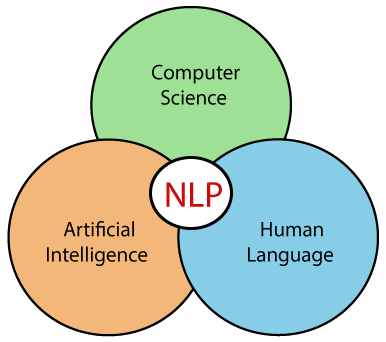Understanding NLP: 5 Key Facts You Should Know About

In the world of computers, understanding human language has become a tough nut to crack. How can we teach machines to make sense of our jokes, catchphrases, or even funny little sayings? This is where Natural Language Processing (NLP) swoops in.
NLP is an intersection of computer science, artificial intelligence, and linguistics that helps machines understand, interpret, and respond to human language in a valuable way. Think of NLP as a super-smart translator. It dives into the heart of our words, sentences, and sayings to figure out what we really mean.
This technology has become even more important as we’re all so connected digitally, and it plays a big role in many of the online tools and services we use every day.
But before we look more at these tools, let’s see how NLP is used and five important facts you should know about NLP, a technology that’s changing the way we live and interact in a big way.
What Is NLP Used For?
Natural Language Processing (NLP) has found a wide range of applications to enhance the ways we interact with digital technology and even shape the operations of various industries. Here are a few common uses:
- Digital assistants: The convenience of asking Siri, Alexa, or Google Assistant for help comes courtesy of NLP. The technology enables these conversational AIs to understand, process, and respond to our queries in natural language, providing information, setting reminders, or even cracking a joke.
- Machine translation: Whether you’re decoding a foreign language document or navigating a foreign city, machine translation tools like Google Translate rely on NLP to convert text from one language to another.
- Sentiment analysis: Companies use NLP to gauge public sentiment about their products or services. The technology can analyze online reviews or social media posts to detect positive, negative, or neutral sentiments and adjust their strategies accordingly.
- Chatbots: The helpful chatbots on many websites use NLP to understand customer queries and respond effectively. It helps improve customer service.
- Text summarization and information extraction: NLP is used in applications that summarize long documents or extract key pieces of information from text. It helps with data analysis and knowledge gathering.
- Speech recognition: In tools like speech-to-text services or closed-captioning for the hearing impaired, NLP helps transcribe spoken words into written text.
The applications of NLP will continue to grow as technology advances. It’ll broaden the horizons of human-machine interaction.
5 Interesting Facts about Natural Language Processing
Here are five key facts about NLP that help illustrate its growing significance in our digital lives.
NLP is a branch of Artificial Intelligence (AI)
Artificial Intelligence aims to develop machines that can mimic human cognitive functions. One aspect of human intelligence is the ability to understand and use language, and this is where NLP comes in.
NLP combines insights from computer science, AI, and linguistics to help machines understand, interpret, and generate human language. It relies heavily on machine learning (ML), a type of AI that empowers machines to learn from data.
Essentially, we train machine learning models on large datasets containing examples of human language (the training data), so they can detect patterns in the way we communicate. These patterns then help the models understand and produce language more effectively.
NLP Focuses on Language
NLP’s main task is to bridge the gap between human language and machine understanding. It’s all about language—reading it, understanding it, and creating it.
One of its most crucial aspects is understanding the meaning of words and sentences in context, a task that is remarkably complex given the nuances of human language.
To this end, NLP uses various techniques and models to analyze the structure and meaning of sentences, identify key information, and even infer the sentiment or emotion behind a text.
NLP Can Help in Speech Recognition
You’ve probably interacted with a voice assistant like Alexa, Siri, or Google Assistant. These assistants can understand your spoken commands and respond accordingly, all thanks to NLP.
Speech recognition, a key application of NLP, involves transcribing spoken language into written text. This process starts with an acoustic model that converts speech into a set of phonetic units.
Then, a language model that is trained on a large amount of annotated speech data predicts the sequence of words that were most likely spoken.
NLP Improves Search Results and Filters Content
Every time you use a search engine like Google, you’re benefiting from NLP. NLP helps search engines understand and respond to your queries, even when they’re phrased in conversational language. Beyond that, it’s used to filter and categorize content.
For instance, email services use NLP to filter out spam, while news aggregation services use it to categorize articles by topic. These applications involve understanding the content and context of the text, a task that NLP is well-equipped for.
NLP Helps to Reduce Translation Barriers
We live in a multilingual world, and NLP plays a crucial role in breaking down language barriers. Machine translation systems, like Google Translate, use NLP to convert text from one language to another.
Translation systems make information accessible to people, regardless of the language
they speak. These systems are trained on large bilingual datasets. They learn to translate by detecting patterns in the way sentences in one language correspond to sentences in another.
Conclusion
Natural Language Processing (NLP) is a transformative force that bridges human language and machine understanding. Through its diverse applications, NLP reshapes our digital interactions and makes them more intuitive and efficient. As we advance, our bond with technology is set to become even more seamless and personalized.

